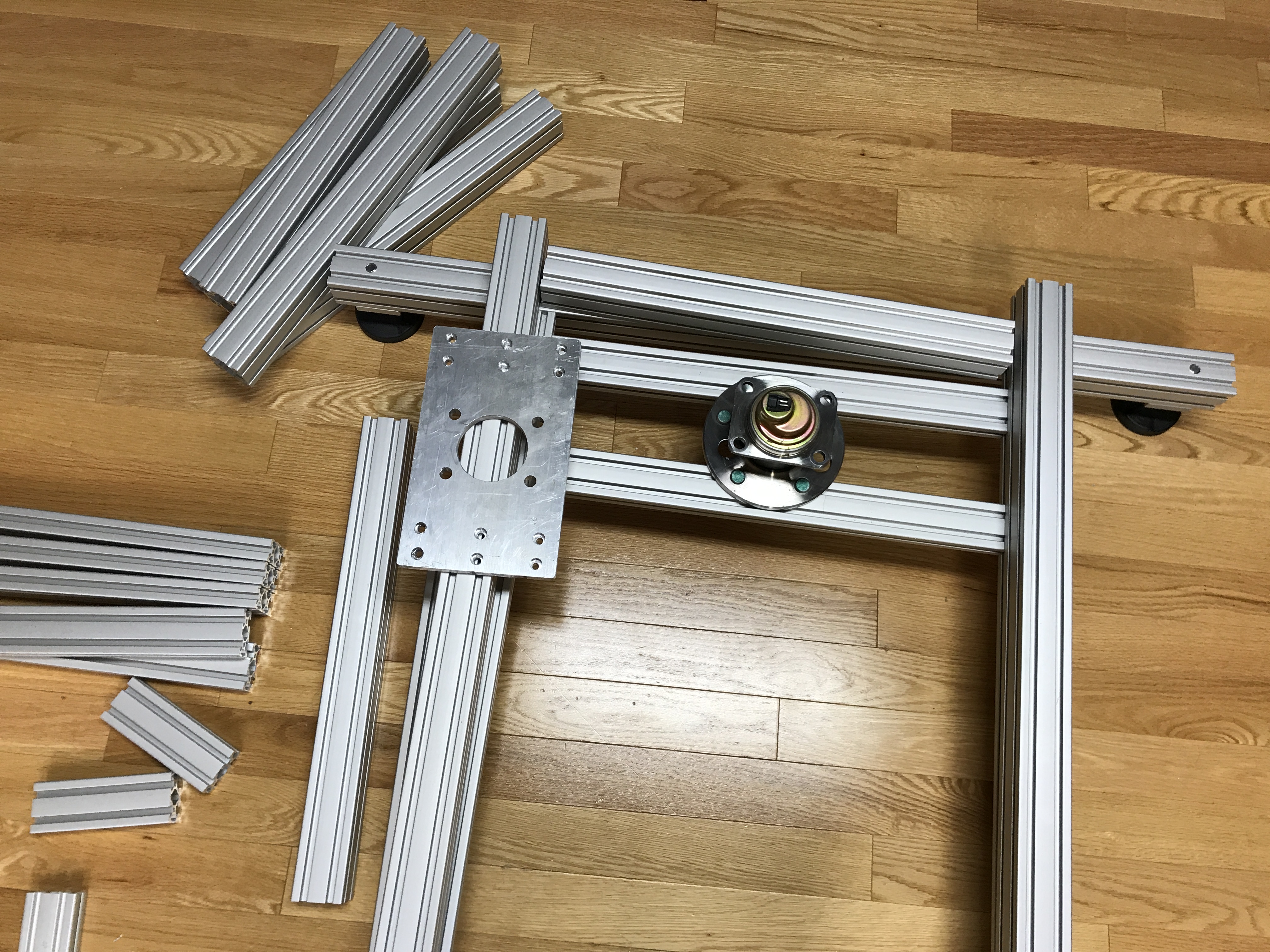I have really enjoyed having a motion simulator platform for sim racing. It's fairly close to real world racing, but costs a LOT less money, and there isn't that risk of serious injury, or death ☠️
I started down this path almost 3 years ago, and with the Oculus Rift bringing VR in to the picture, I am truly hooked.
Version 1 of the motion rig was thrown together using 80/20 extrusion that I already had, and it was pieced together without any real planning. One of the biggest drawbacks of version 1 was its inability to easily adjust for other drivers, especially my kids. There were a few other shortcomings: it was uncomfortable, it flexed and squeaked, the rear traction loss wasn't smooth, the rear speakers flopped around like crazy, and so on...

I decided to spend a little while thinking about how to best resolve the big issues, and turned to Fusion360 to design a quick mockup of the main features.
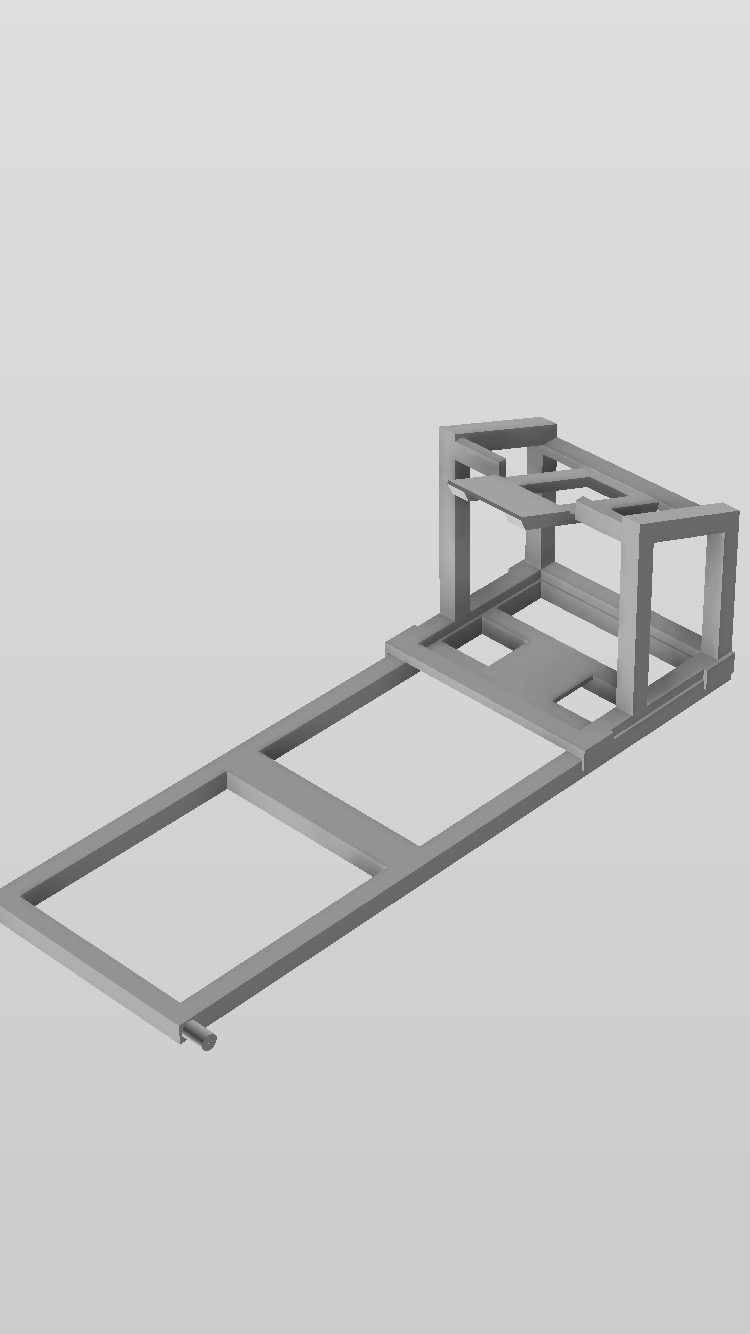
The new design became the basis of what I ordered from 80/20 Inc: Extrusion, linear movement components for the sliding top frame, and the hinges for the steering bracket.
Once the extrusion arrived, I quickly mocked up how everything would fit together and came up with an implementation plan.


Starting with the lower frame, I came up with a process of thread tapping, drilling, and milling to piece everything together.
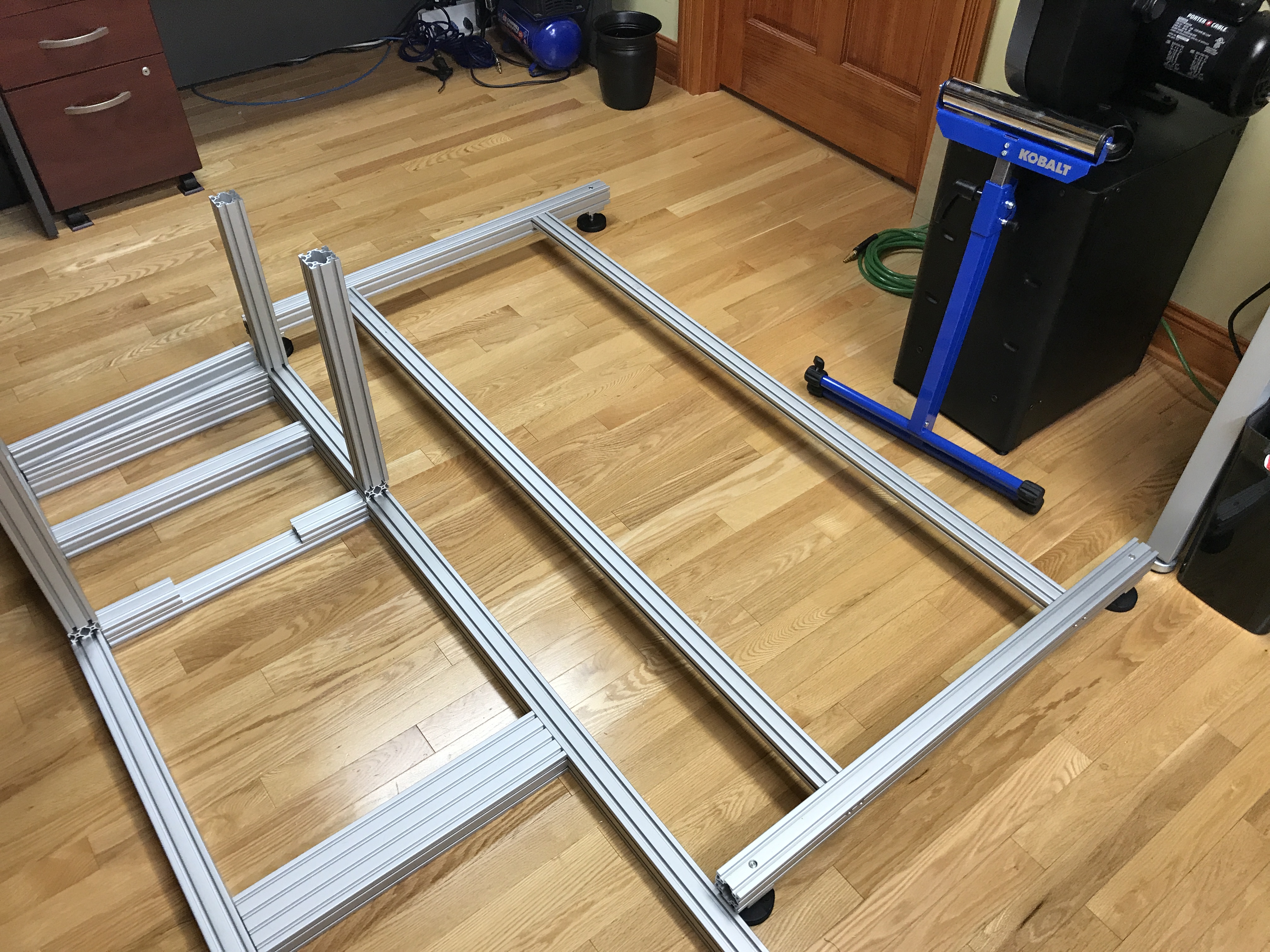

Using a mill bit in my drill press, I was able to notch out the recesses so that the bolt heads sat flush to the edge of the extrusion.


This worked out nicely, although my drill press was a little too loose to provide the most accurate cutting. The drill shaft moved all over the place, leaving some of the recesses a little out of alignment.
Next was building the mid frame joint. The lower and mid frames were attached together using a GM wheel hub that I picked up on eBay for $20 shipped.


I designed this in Fusion360 and milled it using the CNC that I built.
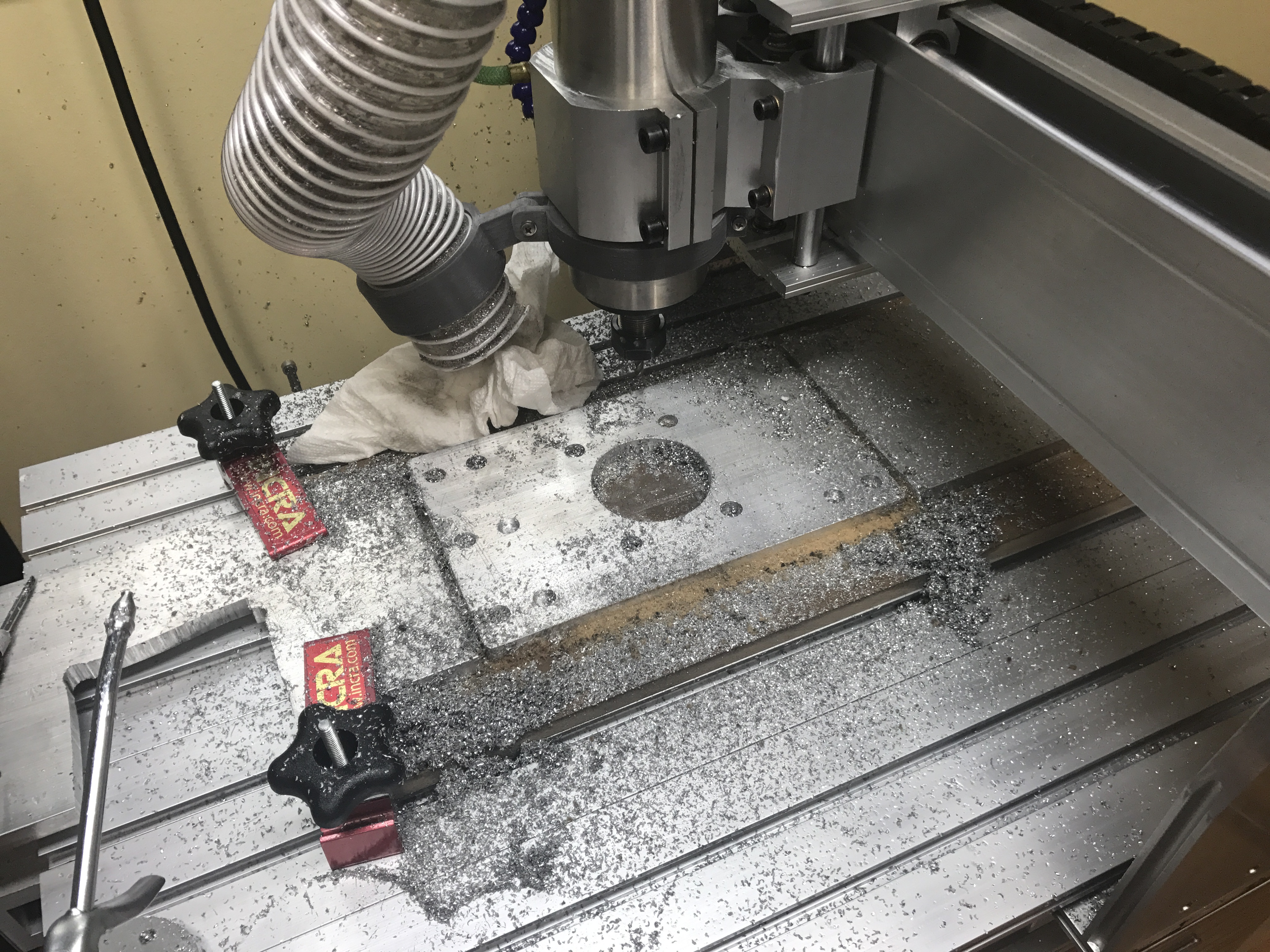

Once that was done, I was able to thread tap the extrusion for the mid frame and pre-assemble it.


I then attached this section of the mid frame to the lower frame. I used long threaded bolts so that I could adjust the height that the mid frame sat on the lower frame.





The top frame was then mocked up. The top frame sits on linear sliders to allow it to slide back and forward. This was the biggest improvement over version 1.


There was a lot of drilling and thread tapping to get all the pieces of the top frame together.




I pieced together a seat mount using 80/20, rather than using the SimXperience DIY seat kit that I had for version 1. I did this so that I could get the seat sitting lower in the frame.


I found a great universal joint on eBay for $30. With this wing style U-Joint, I had a lot more flexibility with how I mounted things. I had to make a quick and dirty jig to get the hole spacing correct as the holes ended up being right along the edge of an extrusion.



I also had to notch out part of the extrusion on the mid frame to allow the U-Joint bolts to sit down further at the extreme angles.




With the seat mounted, I then focused on the rear rollers for the traction loss mechanism. These rollers ultimately set the height of the mid frame from the lower frame. I designed the brackets in Fusion360 and milled them on my CNC.

I used track rollers that I found on eBay. They were called LR200NPPU Track Roller Double Row Bearing Sealed 10x32x9 Track Bearings 18165. I got 4 for $20.




I then mounted them on the cross member of the mid frame.



With the mid frame leveled, I went back to the seat to mount the actuator mount bracket. This was tricky. I had to notch and drill at an angle in the extrusion (98 degrees).

I then designed and fabricated some side support brackets to help relieve the 3 bolts that went into the base extrusion on the seat.



I had to design and fabricate end caps for the extrusion that would allow me to thread tap for the actuators. This was the thickest aluminum stock that I had milled on my CNC at the time. Everything went ok-ish... Mid job the x-axis coupler came loose and the CNC started to dig into the piece. I was able to stop it and recover the job without any major damage.











The rear traction loss actuator needed a pair of brackets. Again, designed in Fusion360, then milled on my CNC.
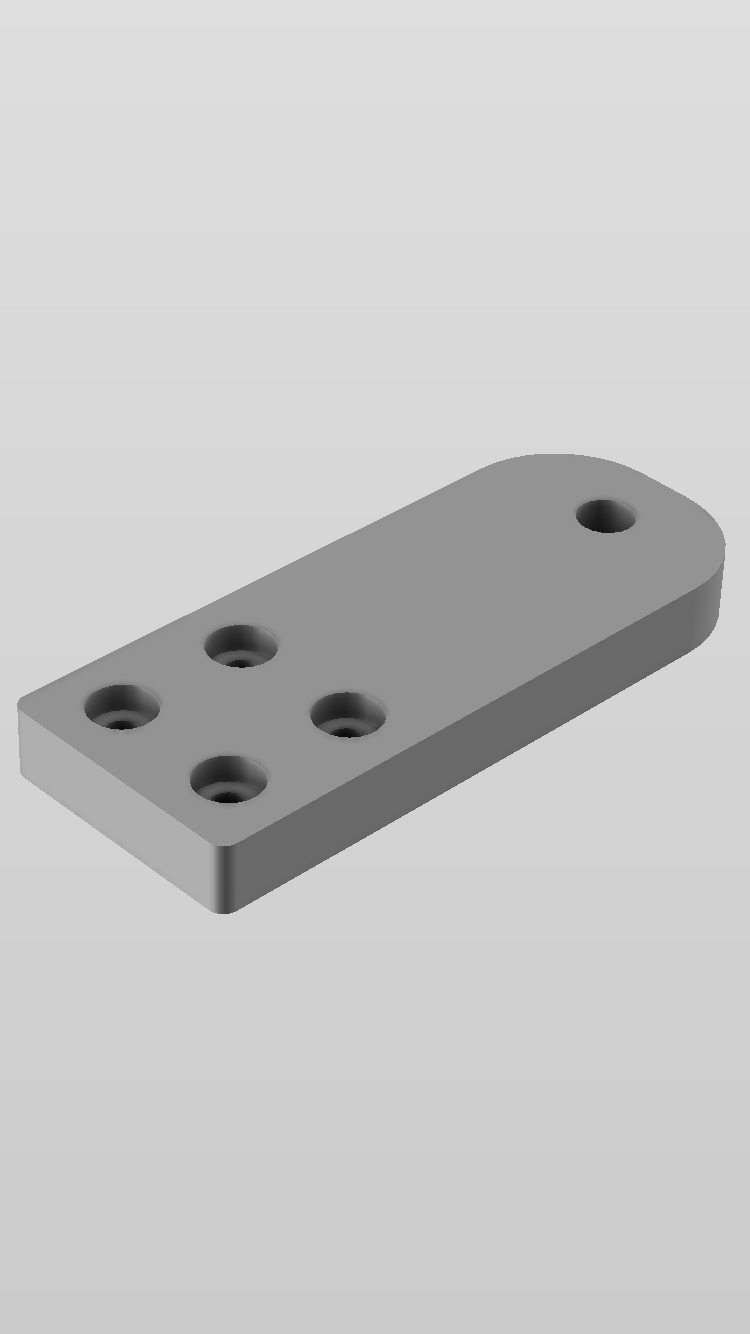





I marked and drilled out the mounting plate for the steering wheel. This was just a piece of stock that I purchased from 80/20 Inc.

Then designed and milled the brackets for the steering height adjustment.




Mounting the shifter and handbrake was pretty straight forward. I was able to use 80/20 components for the shifter and I re-used the version 1 handbrake mount with slight modification.




The transducers mounted directly using 80/20 components.




The final finishing parts came in from 80/20 Inc: some HDPE for the backend to roll on, plastic end caps, and cable management mounts. I had to make a few minor adjustments to things, but in the end it all came together nicely!




Here is the first video of the new rig in action. This is me playing Assetto Corsa in VR.
Update 6/25/2017: 4 point racing harness.

I decided that I needed a racing harness to add to the realism in VR. The harness is mounted to the mid frame with some spring tensioning. When you brake, the seat moves forward, but the harness stays in place, so you feel as if you are being held back by the harness, as you would in a real car. Its a really great experience.


I CNCed a small bracket to mount the springs to the 80/20. The other side of the springs went on to the harness rear mounts, and the harness side mounts went directly on to the seat side brackets.



